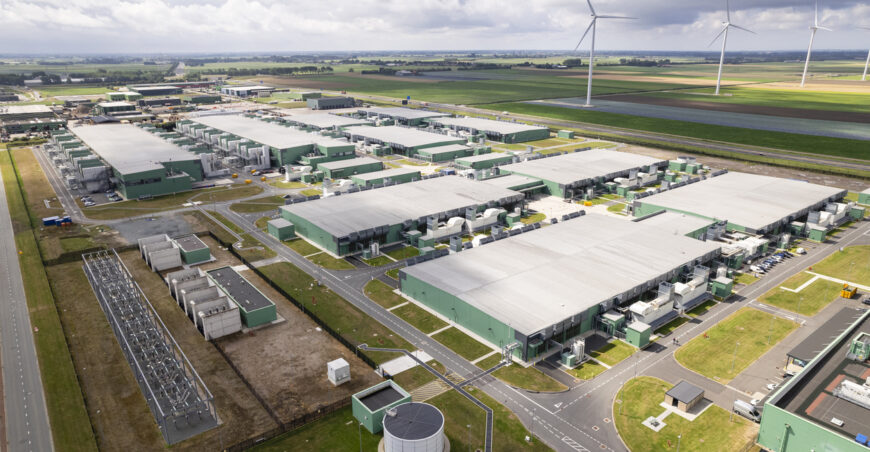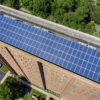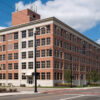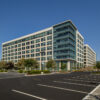In the digital age, data centers have emerged as the backbone of our increasingly interconnected world. These facilities, vital for storing, processing, and disseminating vast amounts of data, are reshaping the commercial real estate landscape. As the demand for data continues its growth, the spreading of data centers is leading to significant changes in the commercial real estate footprint.
The Rise of Data Centers
Data centers are specialized facilities designed to house computer systems and associated components, such as telecommunications and storage systems. They require robust infrastructure, including uninterrupted power supply, advanced cooling systems, and stringent security measures to ensure continuous and reliable operation. The rise of cloud computing, the Internet of Things (IoT), big data analytics, and the increasing digitization of services have been primary drivers of the exponential growth in the number and size of data centers.
1. Increased Demand for Industrial and Specialized Spaces
The rapid expansion of data centers has led to a surge in demand for industrial spaces and specialized facilities. Unlike traditional commercial real estate, data centers require locations with specific attributes such as access to reliable and abundant power, ample water supply for cooling, and strong fiber optic connectivity. As a result, areas that meet these criteria, often former manufacturing sites and warehouses, are being repurposed into data centers. This repurposing drives up property values in these locales and shifts the dynamics of local real estate markets.
2. Changing Investment Strategies
Investors increasingly recognize data centers as a stable asset class. The stability of rental income, driven by long-term leases with tech giants, financial institutions, and other enterprises, makes data centers an attractive investment. This trend is shifting more capital towards the acquisition, development, and management of data centers, which in turn impacts traditional commercial real estate sectors like office and retail.
3. Urban vs. Rural Development
The location of data centers presents a fascinating difference between urban and rural development. Typically, data centers are in suburban or rural areas where land is more affordable and available in larger tracts. These areas often provide the necessary space for expansive data center campuses. However, the demand for low-latency connections has led to the rise of edge data centers. These smaller facilities are located closer to urban centers to ensure faster data processing and delivery. Consequently, we are witnessing a reshaping of both suburban and rural landscapes, with data center campuses becoming prominent fixtures in these areas.
4. Environmental Considerations
The energy-intensive nature of data centers has sparked significant concerns about their environmental impact. Data centers consume vast amounts of electricity, primarily for powering servers and cooling systems, making them major consumers of energy. As a result, real estate developers and data center operators are increasingly focusing on sustainability. Incorporating renewable energy sources, such as solar and wind, and adopting energy-efficient technologies have become standard practices. Also, green building certifications and initiatives to offset carbon footprints are gaining traction in developing new data centers. This shift towards sustainability not only addresses environmental concerns but also appeals to a growing segment of investors and clients prioritizing corporate social responsibility.
5. Workforce and Economic Impact
The construction and operation of data centers generate significant economic benefits, including job creation and local economic stimulation. These facilities require a skilled workforce for maintenance, security, and operations, leading to job creation in the areas where data centers are established. Moreover, the presence of data centers can attract other tech-related businesses, creating a tech ecosystem that fosters further economic growth. This influx of technology companies can stimulate local economies, increase property values, and enhance the overall quality of life in the community.
Future Data Center Trends
The future of data centers and their impact on commercial real estate is poised for continued growth and evolution. Several key trends are set to shape this landscape in the coming years:
Hyperscale Centers: These massive facilities, designed to support cloud service providers and large enterprises, are on the rise. Hyperscale data centers require extensive land and robust infrastructure, driving demand in regions capable of supporting such large-scale developments.
Sustainability Initiatives: The push for greener data centers will intensify, with innovations in energy efficiency and the use of renewable energy sources becoming critical factors in development decisions. Sustainable data center design will not only reduce environmental impact but also meet the growing demand for eco-friendly corporate practices.
Technological Advances: Advancements in cooling technologies, modular construction, and automation will shape the design and operation of future data centers. Innovations such as liquid cooling, AI-driven energy management systems, and prefabricated modular data centers will influence the commercial real estate footprint by introducing new design and operational efficiencies.
Data centers are transforming the commercial real estate landscape, driving demand for industrial and specialized spaces, reshaping investment strategies, becoming a generational investment opportunity and influencing urban and rural development. As the digital economy continues to expand, the role of data centers will only grow, making them an important component of the commercial real estate sector. Embracing this change and understanding its implications will be crucial for investors, developers, and stakeholders in navigating the evolving market.
Their impact extends beyond mere physical space; they are key for economic growth, technological advancement, and environmental innovation. By adapting to these changes and leveraging the opportunities they present, the commercial real estate industry can thrive in this new digital era. Whether through strategic investment, sustainable development, or embracing cutting-edge technologies, the future of commercial real estate is intrinsically linked to the continued rise of data centers.
If you are interested in learning more about the commercial real estate market, feel free to reach out to us at ICRE Investment Team anytime. We’d be happy to help supply you with information on any relevant properties or markets, alongside any connections in lending, investing, brokerage service or consulting that you might need!
















